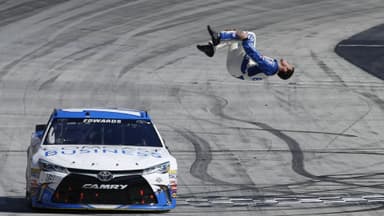NASCAR races stand apart in sheer length, often stretching beyond three hours, while other top-tier series like IndyCar (1 hour 44 minutes), Formula 1 (1 hour 32 minutes), Formula E (49 minutes), and MotoGP (41 minutes), on average, wrap up in far less time. When Chase Briscoe was recently asked if he would support shortening Cup races to mirror those formats, the new No. 19 Joe Gibbs Racing driver gave a measured answer.
Advertisement
Briscoe explained he could go either way, but stressed that the grind of a 400-mile race defines Cup racing. “You would never have guys coming through the field, like, it takes, especially like just in Cup racing, it is so tight. The field is so tight that it takes 400 miles sometimes for a guy to be able to work his way through the field,” he said.
He pointed out the difference in depth between divisions. In Trucks or Xfinity, a frontrunner can recover from a penalty and rejoin the top 15 in 20 laps. But in Cup, where the margin from first to 20th is often just tenths of a second, climbing back is a slow burn.
“So, it takes almost 400 miles sometimes for these races to kind of play out. Now, could some of them be shorter? Yeah, probably. I always want at least a Coke 600. I want the Southern 500. And maybe you can shorten some of the other races, but I do think that that is kind of what Cup racing is,” he added.
For Briscoe, the increase in lengths serves as both a proving ground and an endurance test. Moving from 125-mile Truck races to 250-mile Xfinity events and finally to the Cup’s 400-mile grind reflects the sport’s natural progression.
It’s a huge step up from inside the cockpit just to be that good for that period of time. While he wouldn’t oppose trimming some races, he wants the crown jewels to remain untouched.
Briscoe echoes Kyle Busch’s thoughts
Kyle Busch has long voiced a similar opinion. The two-time champion has said that staples like the Daytona 500, Coca-Cola 600, and Southern 500 should always remain marathon tests, while other races could be shortened to strike a balance.
Busch also highlighted how cautions and weather delays often stretch races far beyond the advertised distance. Rain-shortened events, he added, usually spark more aggressive racing as drivers fight to seize track position early.
Both drivers agree that NASCAR must find a sweet spot: long enough to preserve the sport’s identity and test endurance, but flexible enough to keep modern fans engaged without losing them in the long haul.







